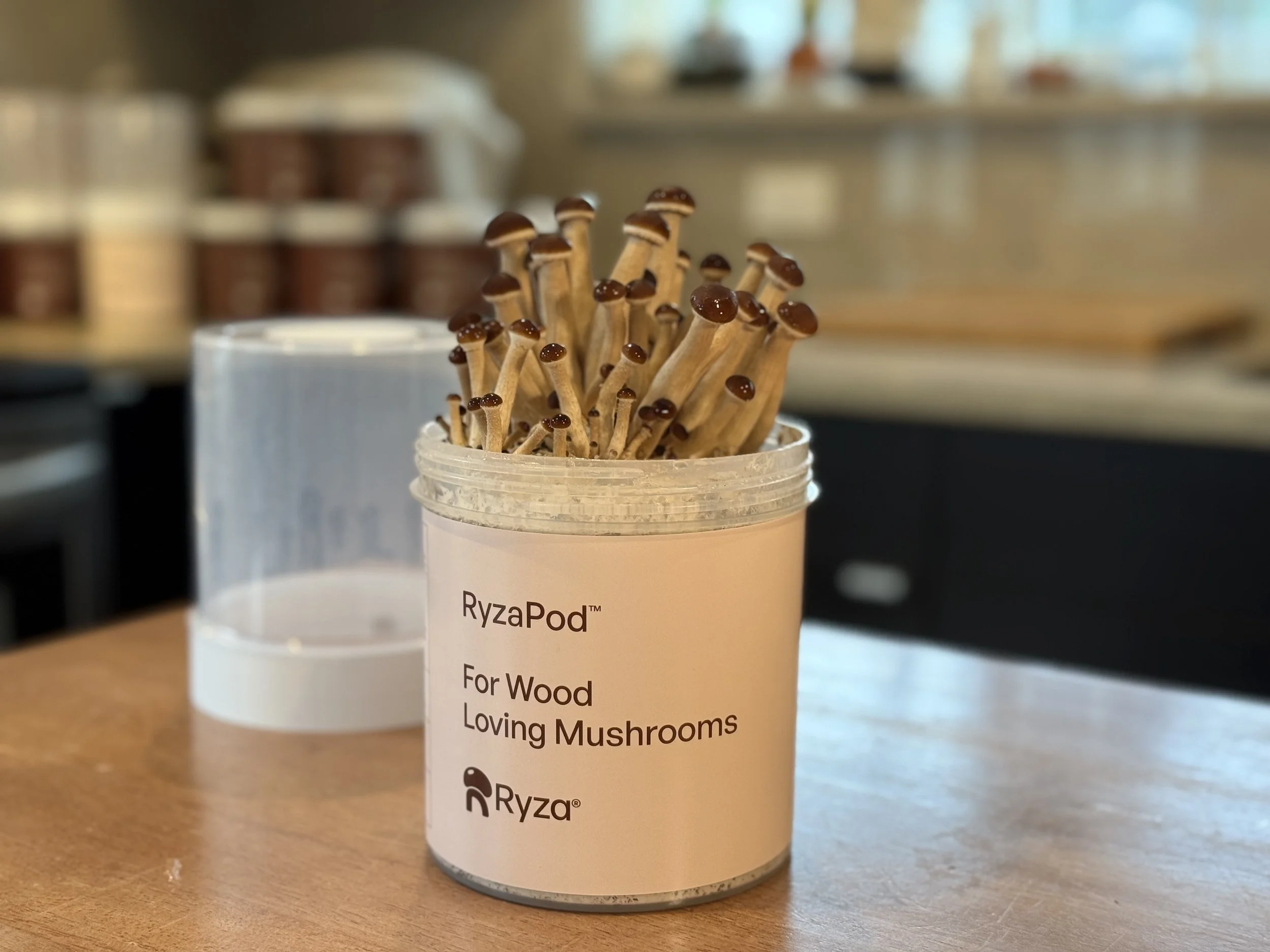Metabolites in Mushroom Cultivation
Surface metabolites on Pink Oyster mycelium (Pleurotus djamor) herald the arrival of primordia.
In the fascinating world of mushroom cultivation, understanding the role of metabolites is helpful when observing mycelial colonization. Metabolites are byproducts produced by fungal mycelium during its metabolic processes, and they can tell us a lot about the state of our growing environment and the health of our fungi. Let’s dive into the different types of metabolites, their significance, and how they play a part in what can be described as natural "biowarfare" in the fungal kingdom.
RyzaPods are the top-rated all in one mushroom grow kit. Loved by thousands of new and experienced growers alike, it doesn’t get easier than RyzaPods.
What Are Metabolites?
Surface metabolites on Black Reishi mycelium (Ganoderma formosanum) are an indicator of healthy fruiting conditions
Metabolites are substances produced by fungi as a result of their metabolic activities. They can be broadly categorized into two types: primary and secondary metabolites.
Primary Metabolites: These are essential for the growth and development of the fungus. They include amino acids, nucleotides, and organic acids, and are typically produced during the active growth phase known as the trophophase, aiding in the digestion and propogation of what’s known as “mycelium run”.
Secondary Metabolites: These are not directly involved in growth but provide other advantages, such as defense mechanisms or competition with other microorganisms.
Metabolites in Action: Natural Biowarfare
One of the most intriguing aspects of secondary metabolites is their role in what can be termed natural "biowarfare." Mycelium can produce these metabolites both actively against competing organisms and prophylactically in anticipation of fruiting. Here’s how they work:
Active Defense: When mycelium encounters competing microorganisms, it can produce secondary metabolites that inhibit the growth of these competitors. Discovered by Alexander Fleming in 1928, the antibiotic penicillin is a fungal metabolite. Produced by the fungus Penicillium, targets and inhibits bacterial growth, giving the fungus a competitive edge in the battle for resources.
Preventative Measures: Even without immediate threats, mycelium can produce metabolites that create an inhospitable environment for potential competitors. This prophylactic production ensures that the mycelium has a better chance of thriving and fruiting without significant competition.
Metabolites in Mushroom Cultivation
In the context of mushroom cultivation, observing metabolites can provide insights into the health and conditions of the growing environment. Here are some key points to consider:
Normal Metabolite Production: It’s common to see a yellowish or brownish liquid on the surface of the substrate or around the mycelium, often referred to as "mycelial metabolites" or "fungal exudate." Small amounts are typically normal and indicate that the mycelium is metabolically active.
Indicators of Stress: Excessive production of metabolites can signal stress. This might be due to contamination, overly high substrate moisture levels, or unsuitable environmental conditions. Monitoring these signs can help cultivators make necessary adjustments to improve conditions.
Environmental Adaptation: The ability of mycelium to produce a variety of metabolites allows it to adapt to different environmental conditions, enhancing its resilience and competitiveness.
Managing Metabolites for Optimal Growth
To ensure optimal mushroom growth, it’s important to manage the conditions that influence metabolite production:
Monitor Growing Conditions: Observe temperature, humidity, and substrate moisture levels to ensure they are within optimal ranges. No standing water or excessive direct sunlight are important for healthy growing conditions.
Address Contamination Promptly: If you notice unusual metabolite production or signs of contamination, take immediate action to address it, such as draining excess water or reducing misting.
Maintain Proper Ventilation: Good air exchange is crucial for healthy mycelium and can help manage metabolite production.
Conclusion
Understanding the role of metabolites in mushroom cultivation provides valuable insights into the health and behavior of your fungi. By recognizing and managing the production of these natural byproducts, you can create an environment that supports robust mycelial growth and successful fruiting. Whether you are a novice grower or an experienced cultivator, paying attention to metabolites is a key aspect of optimizing your mushroom cultivation practice.


